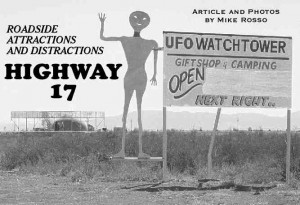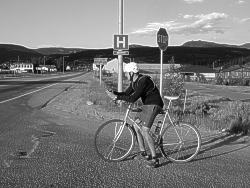Review by Bill Hays
Mountain Life – October 2002 – Colorado Central Magazine
The Backbone of the World: A Portrait of the Vanishing West Along the Continental Divide
by Frank Clifford
Published in 2002 by Broadway Books
ISBN 0-7679-0701-9
While the people it describes are far from spineless, this book isn’t about backbones or the world or even about the Continental Divide — although prospective readers could be excused for thinking otherwise, given its title. It’s a book about the Old West vs. the New West, told in a series of vignettes describing people who are mostly on the losing side of a trend.
Frank Clifford, the author, is an environmental writer for the Los Angeles Times who has also worked for papers in Santa Fé and Tucson. He knows the territory, both in his guise as a reporter and from recreational jaunts on vacations over the years.
Clifford has a fundamental conflict: he loves the unspoiled lands of the West, but he also loves the characters of the Old West — ranchers, Indians, a sheepherder, an out-of-work miner, et al — who are often engaged in the despoliation of those lands. The author is more sympathetic with the aims of those who would change the West from its extractive, resource-based past to a future as nature preserve and playground, but he doesn’t much like a lot of the environmentalists, recreationists, and amenity-tourism practitioners who would do it.
So this series of essays — literary journalism pieces, really — lovingly, almost achingly, describes Quixotic, often hard-bitten people who struggle with ways of life that are on the cusp as the New West inexorably elbows out the Old West. This is honest, unsentimental writing that provides insight into the personalities of difficult loners who reside in some proximity to the Divide in New Mexico, Colorado (where a sheepherder tends his flock within view of Vail’s ski runs), Wyoming, Montana and Canada.
The title of Clifford’s book is a misnomer, though. For some residents of the high country, the Continental Divide in the Rockies indeed might resemble a backbone (although in Colorado the north/south divide on the Eastern Slope between the Platte and Arkansas drainages is culturally and economically more important).
But even allowing for some hyperbole in the title (e.g., the apex of the Continental Divide in the high Rockies is lower and less dramatic than other continental divides, such as in the Andes or the Himalayas), the Divide is often decidedly un-spinelike — it is undetectable in southern Wyoming around the Great Divide Basin and South Pass, and nearly as invisible in parts of New Mexico.
However, as an organizing principle for a book about people affected by the social, political, economic and environmental forces changing the face of the modern West, the Continental Divide is as good as any. The great divide Clifford describes isn’t about watersheds; it’s about the divide between people who have fundamentally opposite views of how the West should be used.


